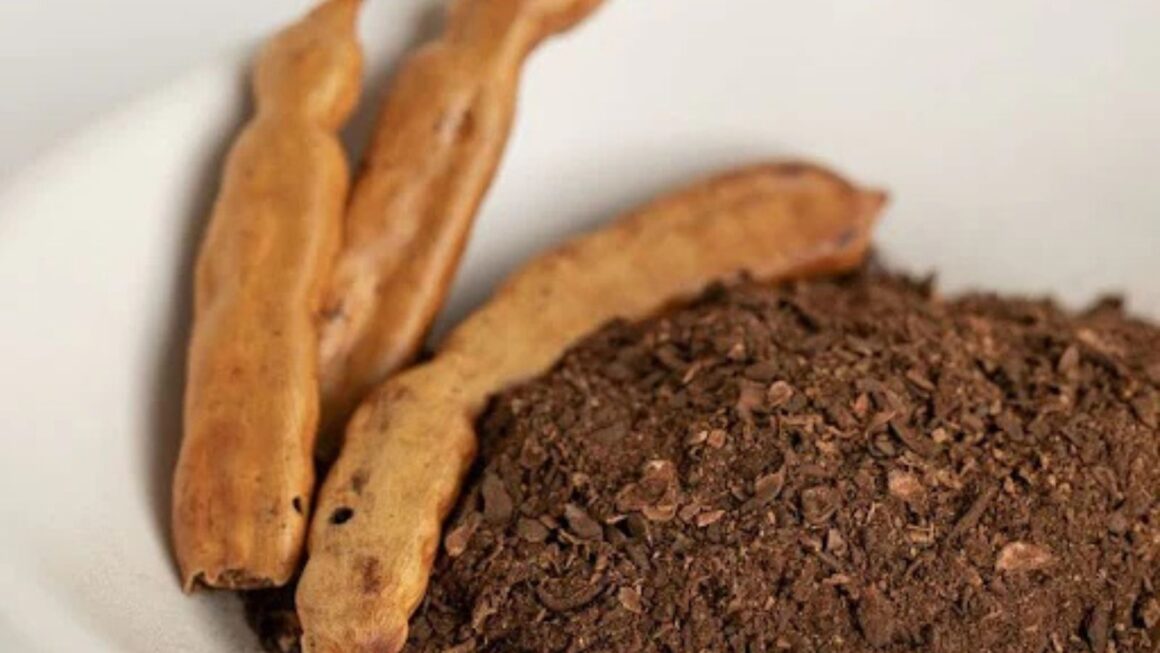Mesquite coffee is celebrated for its distinct flavor profile and nutritional benefits, which stem from the mesquite pods used to make it. Unlike traditional coffee made from roasted coffee beans, mesquite coffee is produced from the ground pods of the mesquite tree, which impart a sweet, nutty taste often likened to caramel. This alternative coffee option is naturally caffeine-free, making it suitable for those who are sensitive to caffeine or seeking a healthier beverage choice. The unique process of making mesquite coffee from these pods, not only preserves the flavors but also the nutrients, offering a beverage that is both delicious and beneficial.
Choosing to make a cup of mesquite coffee at home allows you to enjoy not only its flavor but also its full health advantages, such as high fiber content and minerals. Brewing your own coffee ensures that you can adjust the strength and sweetness to your liking and makes it possible to experience the freshest possible taste by using recently ground mesquite beans or powder. Additionally, by brewing at home, you engage in a sustainable practice, reducing waste associated with packaged beverages.
Choosing Your Mesquite Coffee Ingredients
Selecting Mesquite Beans, Pods, or Powder
When deciding on the form of mesquite coffee ingredients, you have options between mesquite beans, pods, or powder. Each form offers a different aspect of convenience and flavor intensity. Whole beans or pods are ideal for those who prefer to grind their coffee fresh, ensuring a robust flavor and aroma. The pre-ground powder, while more convenient, might lose some subtleties of flavor over time but is perfect for quick preparation. Quality is paramount, so sourcing your mesquite from reputable suppliers who provide organic and sustainably harvested products can greatly enhance your coffee experience.
Grinding Mesquite Beans for Freshness
For the freshest flavor, grinding your own mesquite beans just before brewing is advisable. Using a standard coffee grinder, the beans can be ground to a consistency that suits your brewing method of choice, whether fine for espresso-like preparations or coarse for a French press. Fresh grinding not only maximizes the flavor and aroma but also controls the texture of the final brew, allowing for a personalized coffee experience that pre-ground products cannot match.
Finding Quality Mesquite Coffee Products
The market for mesquite coffee products is growing, and finding high-quality offerings is crucial. Look for mesquite coffee online or in specialty health food stores that stock niche coffee alternatives. How to buy mesquite coffee effectively involves checking for transparency in sourcing and production methods. Products that highlight their origins and the type of mesquite used offer greater assurance of quality and sustainability.
Storing Mesquite Powder and Beans Properly
Proper storage is critical in preserving the quality and flavor of mesquite coffee, whether you’re working with beans, pods, or powder. By following the best practices for storage, you can ensure that each cup of mesquite coffee you brew retains the fresh, distinctive flavors that make this beverage so unique and enjoyable.
-
- Airtight Containers: Always store mesquite powder and beans in airtight containers. This prevents air, moisture, and other contaminants from affecting the quality and freshness of the mesquite.
- Cool, Dark Place: Keep mesquite beans and pods in a cool, dark place such as a pantry or a cabinet away from heat sources. This environment helps to maintain their natural flavor and prevents the degradation of essential oils within the beans.
- Away from Sunlight: Exposure to direct sunlight can lead to the deterioration of mesquite coffee’s flavor and aroma. Store your mesquite products in a location that does not receive direct sunlight.
- Moisture-Free Environment: Ensure that the storage area is free from moisture to prevent mold and spoilage. Mesquite beans and powder are particularly susceptible to moisture, which can quickly ruin your supply.
- Consider Refrigeration for Powder: If you do not plan to use your mesquite powder within a few weeks, consider refrigerating it. Refrigeration can help prolong its freshness and prevent the growth of bacteria and mold, especially in humid climates.
By adhering to these storage guidelines, you can greatly extend the shelf life of your mesquite coffee products and enjoy their optimal flavor with each brew. Proper storage not only enhances your coffee experience but also maximizes your investment in high-quality mesquite products.
Essential Brewing Techniques for Mesquite Coffee
Measuring the Right Amount of Mesquite Powder
To achieve the perfect brew, it’s crucial to measure the mesquite powder correctly. The general recommendation is to use one to two tablespoons per cup of water, depending on how strong you like your coffee. Experimenting with these measurements can help you find the right balance of flavor intensity and sweetness that mesquite coffee is known for.
Using a French Press for Maximum Flavor
The French press method is particularly effective for brewing mesquite coffee as it allows the full immersion of the powder in hot water, which extracts maximum flavor. The key to success with a French press is to allow the coffee to steep for about four minutes before pressing the plunger. This method results in a rich, full-bodied coffee that highlights mesquite’s unique flavor characteristics without the bitterness associated with over-extraction.
Brewing with a Drip Coffee Maker
For those who prefer the convenience of a drip coffee maker, mesquite coffee can easily be adapted to this method. It’s important to use a filter that can handle the finer texture of mesquite powder to prevent it from passing through into the brew. The drip method is great for a cleaner, smoother coffee, and it’s excellent for daily use, especially if you’re looking to make multiple cups at once.
Steeping Mesquite Coffee Like Tea
An unconventional but effective brewing method is to steep mesquite coffee much like tea. This involves placing the mesquite powder in a tea infuser or directly in a cup of hot water and allowing it to steep for several minutes. This technique is perfect for extracting the subtle flavors and sweetness of mesquite without any equipment other than a tea strainer or a simple cup.
Fine-Tuning Water Temperature and Brewing Time
Importance of Water Temperature: 195-205°F (90-96°C)
Achieving the perfect brew with mesquite coffee involves meticulous attention to water temperature. The ideal range for extracting the full flavor without bitterness is between 195 and 205 degrees Fahrenheit (90-96 degrees Celsius). Water that is too hot can cause over-extraction, leading to a bitter flavor, while water that is not hot enough may result in a weak brew. Maintaining this temperature range ensures that each cup of mesquite coffee is smooth and flavorful, highlighting the unique characteristics of the mesquite.
Optimal Brewing Time: 4-6 Minutes
The brewing time is critical when making mesquite coffee to capture its essence perfectly. For most brewing methods, a time frame of 4 to 6 minutes is recommended. This duration allows the hot water to interact sufficiently with the mesquite powder, ensuring that the flavors and nutrients are adequately extracted. Adjusting the brewing time within this range can help you customize the strength and depth of flavor according to your preference, whether you like your coffee strong or more mellow.
Avoiding Over-Extraction and Bitterness
To avoid the common pitfall of over-extraction, which can make your mesquite coffee taste overly bitter, it’s crucial to monitor the contact time between the water and mesquite powder closely. Over-extraction occurs when the water pulls out too many of the bitter compounds. Being vigilant about the brewing time and quickly separating the brewed coffee from the used powder or grounds will help maintain the desired flavor profile.
Adjusting Brew Strength to Personal Taste
Personalizing your cup of mesquite coffee involves adjusting the brew strength to match your taste preferences. This can be achieved by varying the amount of mesquite powder used, the volume of water, or the brewing time. Experimenting with these variables will allow you to find the perfect balance that pleases your palate, making each cup a tailored experience.
Exploring Alternative Brewing Methods
Cold Brew Method: Step-by-Step Guide
The cold brew method provides a delightful twist to enjoying mesquite coffee, particularly suited for the hot summer months. By steeping mesquite powder in cold water over an extended period, this technique allows the subtle, sweet flavors to fully develop without the bitterness that heat can introduce. The result is a smooth, refreshing coffee that’s perfect as a cool drink.
-
- Select the Right Container: Choose a clean, large glass jar or pitcher for brewing. Make sure it can hold the necessary volume of water plus mesquite powder without spilling.
- Add Mesquite Powder: Measure the appropriate amount of mesquite powder into your container. A general guideline is to use about one ounce (about 2 tablespoons) of mesquite powder for every cup of water.
- Pour Cold Water: Fill the container with cold, filtered water. Stir the mixture gently to ensure that the mesquite powder is fully immersed in the water.
- Steep Overnight: Cover the container and let it steep in the refrigerator for 12 to 24 hours. The longer it steeps, the richer and more flavorful the coffee will be.
- Strain the Brew: After steeping, strain the mixture through a fine mesh sieve or a coffee filter to remove the solid particles. You can also use a nut milk bag or a French press to achieve a clear liquid.
Enjoying cold brew mesquite coffee offers a fantastic way to beat the heat while still savoring the unique taste and health benefits of mesquite. This method not only preserves the natural flavors and sweetness but also significantly reduces the acidity, making it a gentler option for those sensitive to traditional coffee’s acidity.
Iced Mesquite Coffee Preparation
For a quick and refreshing iced coffee option, brew mesquite bean coffee using your preferred hot method, then cool it rapidly by pouring over ice. This technique locks in the flavors and aromas, creating a crisp and invigorating drink. Iced mesquite coffee is perfect for hot days, offering a cooling effect while delivering the same health benefits and delicious taste found in hot brews.
Combining Mesquite Coffee with Herbal Teas
Integrating mesquite coffee with various herbal teas can create delightful combinations. For instance, blending brewed mesquite coffee with hibiscus or chamomile tea can introduce a range of flavors that complement mesquite’s nutty and sweet notes. This combination not only tastes wonderful but also adds a layer of complexity to your beverage, making it an interesting drink to savor.
Experimenting with Different Brewing Styles
Embracing different brewing styles can significantly alter the experience of drinking mesquite coffee. Whether it’s trying out an espresso machine to make a concentrated mesquite shot or using a percolator for a deeper infusion, each method brings out different aspects of the coffee’s flavor. Exploring these various styles can help you appreciate the versatility of mesquite and find your personal favorite way to prepare it.
Throughout this guide, we’ve explored the various aspects of the mesquite coffee brewing process, highlighting effective techniques and key considerations that ensure you can brew the perfect cup every time. From choosing the right ingredients like roasted mesquite beans to understanding the nuances of different mesquite coffee brewing methods, we’ve covered how integral each step is to achieving the desired flavor and richness.
The journey to making great mesquite coffee doesn’t end here. Each cup offers an opportunity to refine your skills and tweak your methods, from the best way to brew mesquite coffee using a French press to exploring cold brews or using a drip coffee maker. The beauty of mesquite roasted coffee lies in its versatility and the ability to adapt to various brewing styles. I encourage you to continue experimenting with different techniques and ratios to discover what works best for your taste preferences.

